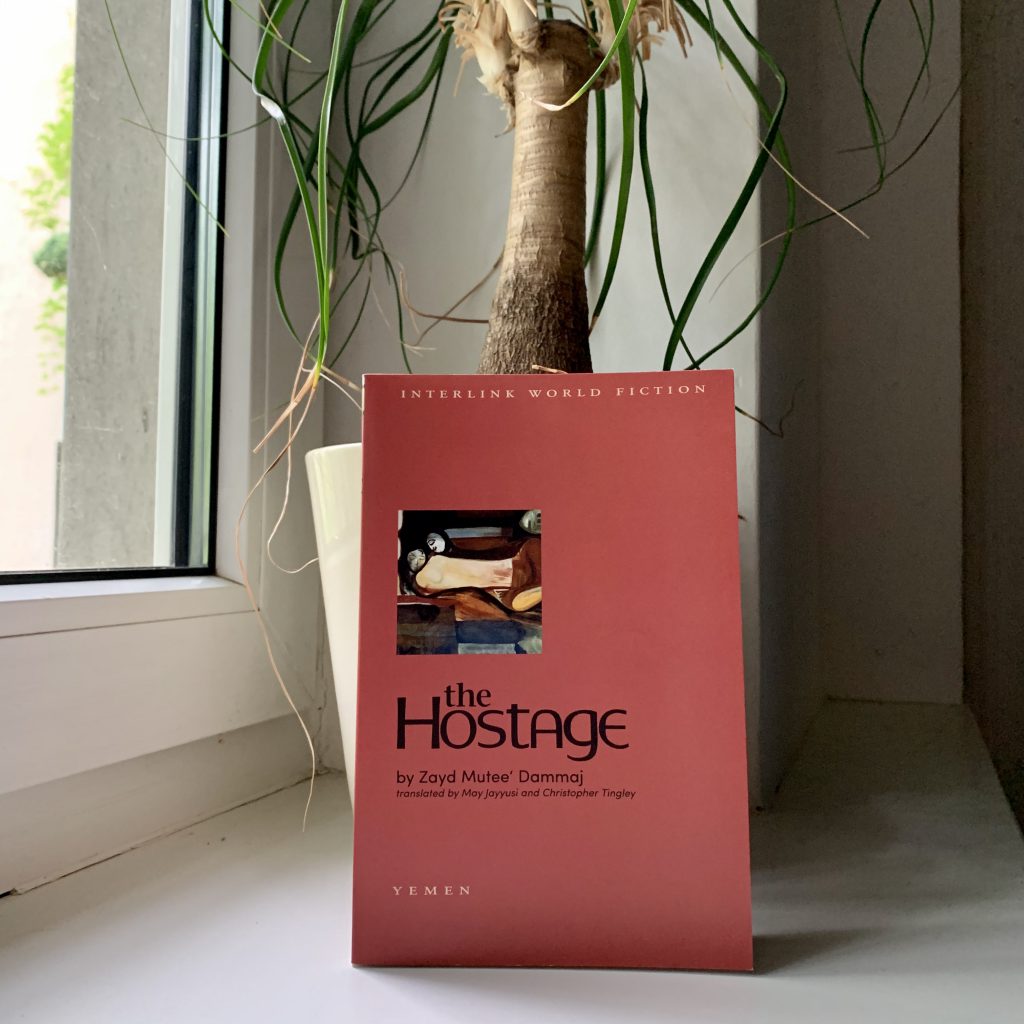Set in the 1940’s, Zayd Mutee’ Dammaj’s novella draws on a bygone era in Yemen’s history. After the fall of the Ottoman Empire, North Yemen secured independence in 1918 and remained an enclave of feudalistic society, often referred to as the “Tibet of the Red Sea.” To the south, the city Aden, which was under British occupation for its strategic position as a port, became North Yemen’s primary connection to the outside world. Dr. Robert D. Burrowes explains: “Aden, called ‘the eye of Yemen’ in Arabic literature, had by the 1950s become the window on and the door to the modern world for a tightly shuttered Yemen.” Imam Yanya, the first ruler of North Yemen, permitted 40 boys, who became known as The Famous Forty, to be educated abroad. Nearly two decades later, Dammaj would join the growing intelligentsia of young Yemenis abroad, studying law and journalism in Egypt. In addition to his career as a literary writer, Dammaj was also a member of the Republic of Yemen’s first elected parliament, a governor and an ambassador to Kuwait. The Hostage is arguably Dammaj’s most internationally recognized piece with translations in multiple languages, including Russian, German, English and Hindi.
The novella is about an unnamed boy, taken hostage as a duwadera, a young male servant who carries out tasks previously prescribed to eunuchs. Under Imam Yanya’s rule, boys from prominent families were kidnapped to ensure loyalty to the Imam. The unnamed narrator works in the Sana’a governor’s palace and falls in love with his sister, a recent divorcé. The boy is clearly too young to possess such sensual feelings, and it becomes clear to readers that the palace women abuse their position and power over him.
The narrator sleeps in a small, dark room with an older duwadera, known as the handsome duwadera, who is called on by a variety of women from the palace. As the narrative progresses, the handsome duwadera suffers from debilitating tuberculosis, which the palace women ignore when they come to their room in the middle of the night. The director who facilitated the English translation of the novella, Salma Khadra Jayyusi explains this abusive behavior as the “corrosive impact of decadence.” Rather than portray such abuse realistically, Dammaj relies on subtle satirical moments to highlight the absurdity of the ruling class.
Further, as a first-person narrative, The Hostage portrays the young boy’s limited understanding of his role as a duwadera. Through an adolescent’s eyes, readers receive the story piecemeal, which mutes some of the harsher realities. In one of the recurring scenes, the palace soldiers taunt the narrator, singing,
“Your mother, oh duwaydar, is distracted by her loss;
Her tears fall like rain…”
Although this upsets him, he doesn’t appear to understand why he was taken from his family and when he can expect to return home. Many of the action verbs portray the boy’s confusion. In one scene, he finds out his uncles are in prison, and his father has escaped to Aden, to which he responds, “This made me thoughtful. I hadn’t realized my father was so important.” While readers are conscious of a brewing revolution happening outside the palace walls, the narrator is unaware of both the political climate and the reason for his captivity.
Although Dammaj uses subtle language throughout the novella, some of the verbs seem to miss their mark. The narrator is frequently described as thinking or pondering, but it’s often unclear what he’s thinking about or if he’s come to any conclusion. In general, I have the feeling the language in the original Arabic version is much more nuanced, which was partially lost in translation. Despite this, Dammaj provides a snapshot of a period in Yemen’s past, pre-unification and is an excellent entrance into a region with a rich and specific literary tradition.
Further Reading
ArabLit Quarterly is my personal favorite and is a great source for Arabic voices in English translation.
Banipal is also a UK-based magazine, highlighting modern Arabic literature for English-speaking audiences.
Stats
Title: The Hostage
Author: Zayd Mutee’ Dammaj
Translators: Christopher Tingley and May Jayyusi
Publication Year: 1984
Pages: 155


HI, could you please explain more on “Further, as a first-person narrative, The Hostage portrays the young boy’s limited understanding of his role as a duwadera. Through an adolescent’s eyes, readers receive the story piecemeal, which mutes some of the harsher realities. In one of the recurring scenes, the palace soldiers taunt the narrator, singing,”. Many thanks. I have bookmarked your website for future use.
Hi Mamta,
Thanks so much for your comment and apologies for my delayed response! Yes, to explain a bit more, Dammaj’s choice to use first-person narration, rather than say third-person omniscient narration, depicts the young boy’s only partial understanding of his situation. Since he is young, he doesn’t fully understand why he was captured and taken away from his family or that the palace women take advantage of him and the young male servants.
As readers, we therefore slowly learn about the young boy’s situation through his perspective and the other characters’ interactions with him, like the palace soldiers taunting him. He doesn’t fully understand the song the palace soldiers sing to him because he is young, but as adult readers, we understand the gravity of his situation.